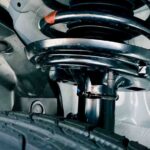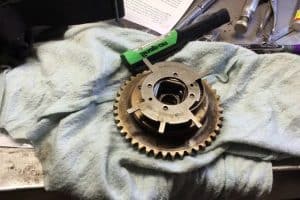Traction control works in the background to prevent your car from slipping or spinning out of control due to icy or slippery roads. In this article, I’ll help you understand how the traction control light works and what causes it to come on.
If the traction control light illuminates, it usually means that your car is running properly by regaining or maintaining traction on slippery roads. On the other hand, it could also signify that your vehicle has damaged sensors or wires. Take your car to a trusted automotive repair shop at the first sign of car trouble to stay safe on the road.
Read on to learn about the traction control light: what and why it is on.
What Is Traction Control?
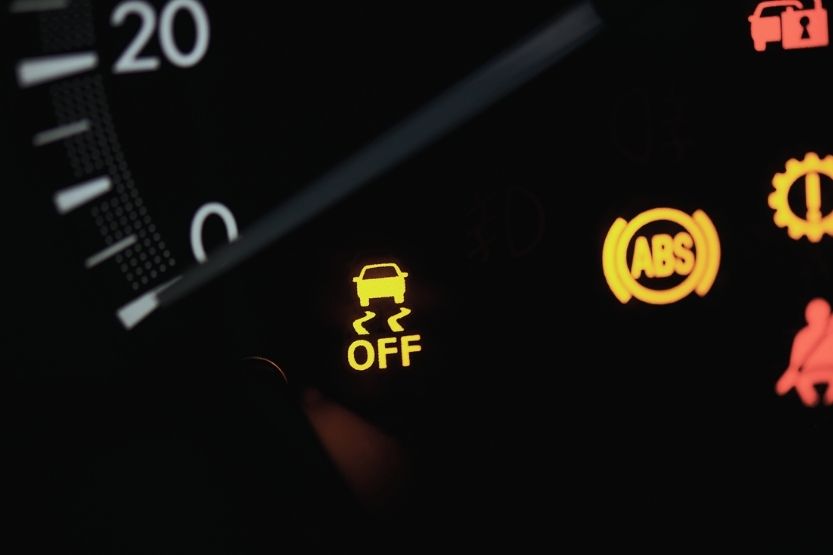
Traction control is a safety feature that has been around in different forms for decades. But since the technology was still in its early stages, it wasn’t that reliable or popular back then.
Standard Feature in Most Cars Built from 2011 Onwards
It was only in the late ’80s and early ’90s that it became more complex and commonplace. Later on, it became a standard feature in most cars built from 2011 onwards.
Designed to Prevent Tires from Slipping
As the name suggests, traction control is designed to prevent tires from slipping, especially when driving on icy or wet roads.
Often Paired with the Anti-lock Braking System (ABS)
This allows you to accelerate without losing control of your car. The traction control system (TCS) is often paired with the anti-lock braking system (ABS) to enhance your car’s stability.
Key Components of Traction Control System (TCS)
The TCS has three key components:
Wheel Speed Sensor
The wheel speed sensor measures both the direction and speed of your car’s wheels. After getting the wheel’s direction and speed, it sends the information to the electronic control unit. When it’s damaged or not working correctly, it also affects the anti-lock braking system.
Electronic Control Unit (ECU)
The electronic control unit is responsible for keeping an eye on your car’s wheel activity.
It also processes the data collected from the wheel speed sensor to tell the traction control system the amount of pressure that’s safe to apply to the affected wheels by activating the cable attached to the automatic traction control valve.
Hydraulic Modulator
And lastly, the hydraulic modulator consists of all the components responsible for controlling the operation of the hydraulic brake circuit if your car’s wheels start to skid.
These are the pistons, solenoids, and valves. The primary function of the hydraulic modulator is to control the pressure in the wheel brakes.
What Are the Benefits of Having the Traction Control System in Your Car?
According to PolicyAdvice.net, 76% of weather-related car crashes happen on wet roads, while only 46% happen when it rains. Meanwhile, icy and snowy roads account for 13% and 18% of these crashes.
Allows You to Drive Safely
While it isn’t foolproof, the traction control system allows you to drive safely, significantly when you’re accelerating up slippery hills or any road with little to no traction.
Performs Better When Paired with the Electronic Stability Control System and Anti-lock Braking System
It performs even better to prevent wheel slip and maintain car stability if paired with the electronic stability control system and anti-lock braking system.
But the traction control system has its limitations. It’s not ideal to use in all types of situations. For instance, according to some experts, you’re better off using a four-wheel drive (4WD) for off-road driving because this type of road condition could potentially damage the traction control system.
How to Fix Service Traction Control
What Is Traction Control Light?
Traction Control Light’s Symbol Look Different for Every Car Model
The traction control light is one of more than sixty dashboard warning lights in passenger vehicles. The symbol for these warning lights could look different for every car model.
It could look like a swerving car or a car with two wavy lines below it. Other car models use the “TC” or “TCS” abbreviation.
Normal for the Traction Control Light to Flash for a Second or Two
It’s normal for the traction control light to illuminate for a second or two. It only means it’s working fine, depending on your situation.
But if it stays on when your car starts, many reasons could explain the cause. It could mean the traction control system is deactivated or faulty. In some cases, it happens because you’re trying to drive on slippery roads. Make sure to have your car checked.
Is It Safe to Drive with the Traction Control Light on?
It’s usually safe to drive with your traction control light on. But if the anti-lock braking system light, brake warning light, and traction control light are on, your car’s entire braking system isn’t working correctly.
So, as much as possible, you shouldn’t attempt to drive while it’s on, regardless of your situation.
Why Does a Traction Control Light Come On?

Here are seven possible reasons the traction control light stays on when accelerating:
1. Bad Road and Weather Conditions
If a traction control light illuminates when you’re driving in adverse weather, it’s a sign that your system is doing its job to keep the tire in contact with the road surface.
Flickering on and off Despite Driving in Good Weather or Road Condition
But if it stays illuminated or is flickering on and off despite driving in good weather or road condition, there might be something wrong with your traction and stability systems.
Cannot Handle the Severe Driving Conditions
There’s also a possibility that your car’s traction control system cannot handle the severe conditions you’re driving in. For instance, if you’re driving in an area that’s muddy or full of potholes, your tires might be unable to maintain traction.
Slow Down Your Car and Park It
In this type of situation, there’s nothing much you can do other than slowing down your car and parking it somewhere safe. Once the weather becomes better, or the road condition changes, the traction control light will automatically switch off.
Consider Buying Traction Control Devices
If you haven’t had installed them yet, consider buying traditional traction control devices, such as:
- Winter tires,
- Tire chains, and
- Cable chains.
2. Bad or Failing Steering Angle Sensor
Detects and Calculates the Steering Wheel’s Angle and Rate of Turn
The steering angle sensor works with the stability control system. It detects and calculates the steering wheel’s angle and rate of turn.
Send Inaccurate Information to Car’s Onboard Computer
Steering angle sensors rarely malfunction because they’re made to last the lifespan of most cars. But if they become faulty or damaged, they send inaccurate information to your car’s onboard computer.
Incorrect Electronic Stability Program (ESP) Adjustments
This can cause the electronic stability program (ESP) to make the necessary adjustments or provide steering inputs at the wrong time.
Symptoms of a Damaged Steering Angle Sensor
There are a few ways your car will let you know when your steering angle sensor is damaged, faulty, or misaligned. Some of the common signs include the following:
- Your steering wheel will feel loose.
- The traction control light and check engine light illuminate.
- Your car feels different after a front-end alignment.
3. Failing Wheel Speed Sensors
Play a Crucial Role in the Anti-lock Braking System
Wheel speed sensors play a crucial role in your anti-lock braking system. Their function is to communicate the rotation and speed of each wheel to your car’s electronic control unit (ECU).
The ECU will then tell the anti-lock braking system the amount of hydraulic pressure to apply to prevent the wheels from locking up.
Connected to the Car’s Traction Control System
These sensors are also connected to your car’s traction control system. So, when they malfunction or completely stop working, your car’s onboard computer cannot determine if the wheels are locking up or not.
Issues with Braking, Stability, and Traction Systems
As a result, your car will have issues with its braking, stability, and traction systems. Failure to immediately address this issue could be costly and have implications for your safety.
Causes of Failing Wheel Speed Sensors
Why do wheel speed sensors stop working correctly? There are several reasons, but corroded or frayed electrical connections are the most common.
The plastic components of the wheel speed sensors could also become brittle over time due to prolonged exposure to harsh weather elements. Excessive vibrations can also damage the sensors’ winding.
Symptoms of bad or failing wheel speed sensors
- The traction control light stays on.
- The anti-lock braking system light stays on or doesn’t come on.
- The front tires lock up when you push your brakes.
- There’s a noticeable decrease in handling or traction control, especially in poor weather conditions.
Again, what is a traction control light? An illuminated traction control light means your car maintains its traction while you’re driving on a slippery road. If this isn’t the case, you must visit a mechanic since your car’s sensors may be damaged.
4. Limp Mode
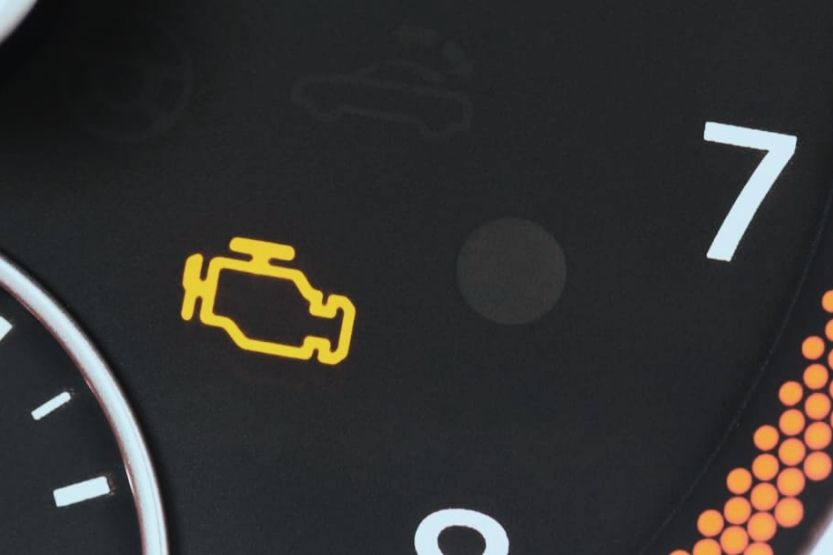
Critical Security Feature in Most Vehicles
Limp mode, also called limp mode home, is a critical security feature in most vehicles. Modern cars regularly check their different components and systems.
Suppose the computerized systems detect a significant problem. In that case, they activate the limp mode for damage control while allowing you to keep on driving until you reach a safer place or an auto repair shop.
Disables or Limits Non-essential Components
What the limp mode does is it disables or limits non-essential components or systems in your car. For instance, it might automatically turn off the AC.
Causes of Limp Mode
- Overheating
- Transmission failure
- Inadequate fluid or oil level
- Damaged electric cables and wires
- Faulty wheel speed sensor or other sensors in your car
For your car to go into limp mode, your car’s computerized systems should’ve saved an error code for an extended period. It doesn’t harm your car, but instead, it tries to get your attention for you to fix potential damage.
Symptoms of Limp Mode
Here are other ways to know if your car is in limp mode:
- Your car drastically slows down.
- The engine is unreliable when you try to accelerate your vehicle.
- Your car shakes while idling or accelerating.
- There might also be black smoke coming out of the exhaust pipe.
- The check engine light and traction control light are on.
Does the Traction Control Light Put Your Car into Limp Mode?
No. The traction control light indicates that limp mode might’ve deactivated your traction control system. As a result, the traction control light turns on.
A fault with your car’s wheel speed sensors might also put your car into limp mode. When wheel speed sensors deliver inaccurate data to the anti-lock brake system and traction control system, it could cause your car’s computerized systems to activate a somewhat “safe mode.”
5. Bad or Failing Steering Rack
Key Component of the Power Steering System
The steering rack is a key component of the power steering system, which maneuvers the front wheels of your car. Hydraulic fluid is pumped into the steering rack to make it easier to turn your steering wheel.
Harder to Steer the Car When Driving
With that said, having excellent traction is essential for having smooth and easy-to-control steering. If your steering rack is faulty or stiff, or if hydraulic fluid pressure is weak, it will be harder to steer your car when driving on rough roads or during bad weather.
Causes of Steering Rack Failure
There are two common reasons for steering rack failure: fluid contamination and damaged steering pump. A worn steering rack can cause you to partially or completely lose control of your steering wheel.
So, that goes without saying that it’s dangerous to keep driving when your steering rack is damaged.
Signs of a Bad Steering Rack
- Steering wheels feel too loose or too tight
- Burning oil smell
- Clunking, grinding or knocking sounds when turning the steering wheel
- Leakage of power steering fluid (pink or red)
- The steering feels more difficult at lower speeds.
- Your car feels wobbly on the highway.
Average Cost of Steering Rack Replacement
Replacing a steering rack can be expensive. The average cost of replacing it could go anywhere between $800 and $4,000. The entire process usually takes around four to six hours, depending on the make and model of a car.
6. Manual Override (MO)
First off, the traction control system must remain active most of the time when you’re driving. But there are times when you need to turn it off because it could make the situation worse than better.
For instance, you might want to turn it off because you’re trying to get your car unstuck in the deep mud or snow. In some cases, turning it off is necessary when you’re driving up an icy or snowy hill.
Every car has a button that you can press to turn off the traction control system or stability control system. This button could show a picture of a car with wavy lines below in most cars. Always consult your owner’s manual for the specific procedure on how to disable the traction control system.
How to Turn Off the Traction Control System on a Volkswagen Car
- Put your car into accessory mode: This mode allows a specific power to operate accessories, such as the radio.
- Press the hazard button or the red triangle button on the dashboard.
- Then, press the gas pedal five times.
- Once your car moves around five feet, the traction control system will instantly turn back on.
Note: This procedure doesn’t apply to all Volkswagen cars.
How to Turn Off Ford’s Traction Control System
- Check the year and model of your Ford car. You could either push and hold the traction control button or use the steering controls on the dashboard to scroll through the menu.
- On the left portion of your steering wheel, push the back arrow.
- With the use of the down arrow, scroll down to access the settings.
- Press “OK,” and then choose “Driver Assist.”
- Press “OK” once more.
- Once it shows “Traction Control,” press “OK” on the left-hand side of your steering wheel.
How to Turn Off the Traction Control (TRAC) System on a Toyota Highlander
- Press and release the vehicle stability control (VSC) off button on your dashboard. Make sure the slip indicator light comes on.
- To turn it back on, press the VSC button again.
- The traction control system will re-engage once your car picks up speed.
Please note: Even if you manually deactivate your car’s traction control system, there’s still a good chance it will activate itself again after you restart your car.
7. Programming Issues
Requires Reprogramming Due to a Glitch in the System
While car-safety technology has vastly improved in the past decades, just like other computers, it still needs fixing. So, there could be instances when the traction control system might need reprogramming because of a glitch in the system.
This could happen because of programming errors, which develop over time, or a manufacturing defect.
Do Not Usually Cause Severe Damage to Cars
If the traction control has programming issues, expect an indicator light for traction control to come on. Programming issues don’t usually cause severe damage to cars, but they put you and others in danger.
Get a Mechanic to Fix the Issue
Get a certified mechanic to fix it as soon as possible. Make sure your mechanic specializes in your car’s make and model.
Check the Car’s Manual
There are other reasons for a traction control light to come on when accelerating. One of the best things you could do is check your owner’s manual to determine what it means for your car’s make and model.
Conclusion – Traction Control Light
You don’t need to panic when the traction control light comes on. It’s typically a sign that your car is working as it should by maintaining traction on slippery or wet roads.
But in some cases, mainly when it stays on, the traction control light could mean that the system has been deactivated. Or there’s an issue in the traction control system.
In short, never ignore the traction control light, regardless of the situation. Pullover to somewhere safe and restart your car. It should turn off after you’ve restarted your car. If it doesn’t, it’s time to get your car to a trusted mechanic.

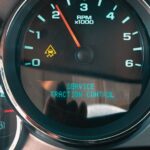
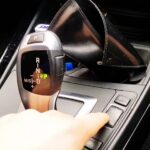
![Transmission Control Module Location [for Various Models] transmission control module location](https://roadsumo.com/wp-content/uploads/2022/12/transmission-control-module-location-150x150.jpg)

![ABS Light Comes On [Why Is It On and How to Turn It Off] abs light comes on](https://roadsumo.com/wp-content/uploads/2022/08/abs-light-comes-on-150x150.jpeg)
